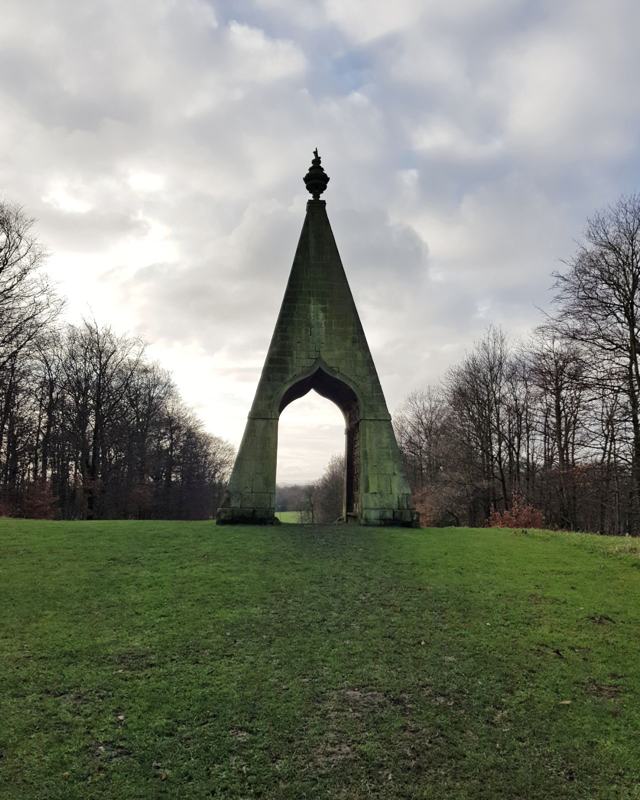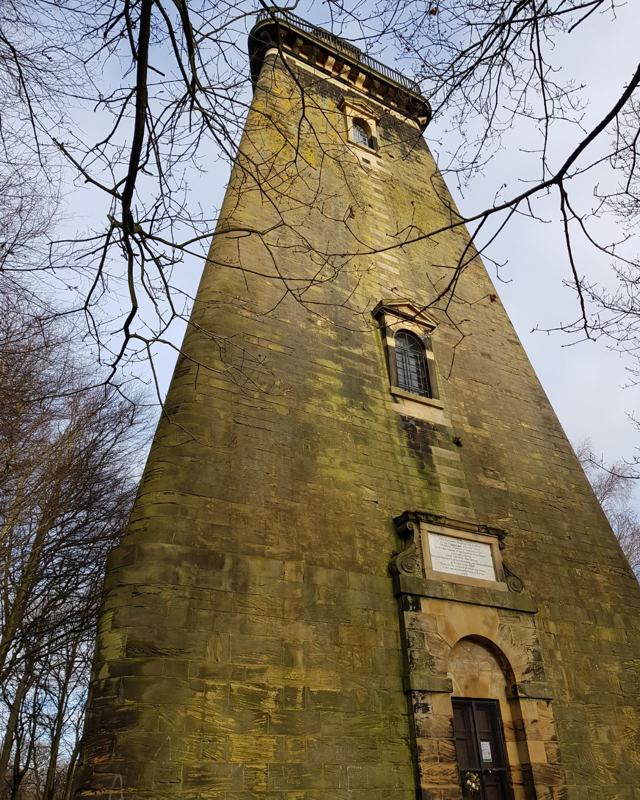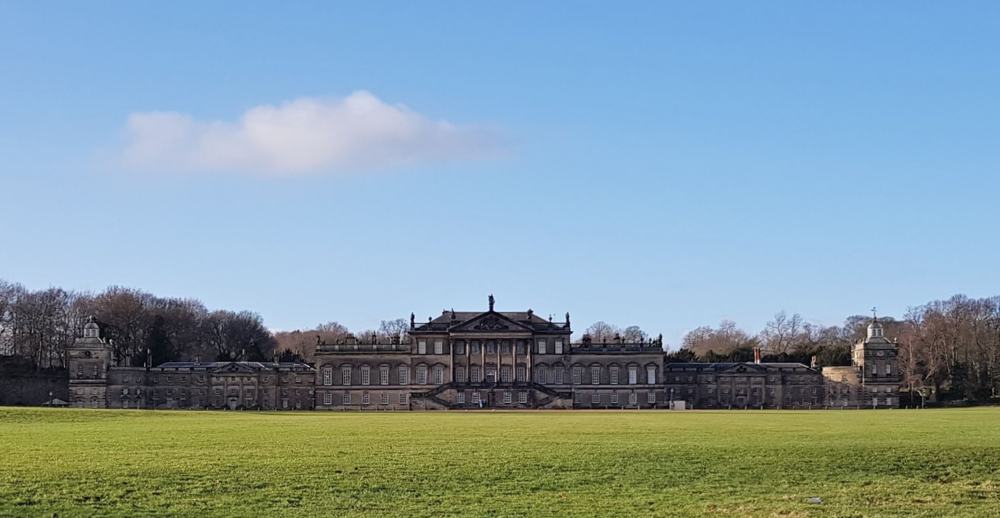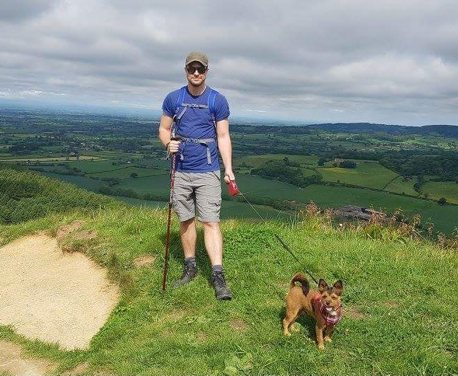December is a hectic time; presents to buy, friends and family to see, excessive amounts of food and drink to be consumed… It can be difficult to find the time to get outdoors when weekends are filled with such tasks, particularly to places that require a lengthy journey before you’ve even put boot to mud. I currently live in a city, and as such don’t have the luxury I’ve previously enjoyed of walking out of my back door into miles of rolling countryside, but I’ve found that there is usually an escape route to greener pastures waiting to be found. It may be parkland, a river, or canal, and having moved around England a few times it’s clear to me that our country’s cities offer accessible greenery to most who are willing to look.
We were pleased to discover that a swift walk through the city centre of Wakefield and along a recently built bypass gives access to the North/South section of the Trans Pennine Trail, which runs from Leeds to Chesterfield and allowed us to squeeze in a fourteen mile jaunt from Southern Washlands, over the river Calder, and through Heath and it’s delightful village green. From here the route leads onto the site of the Walton Colliery, now transformed into a vast nature reserve with multiple trails through its grounds and around its lakes, before continuing on into the serene Haw Park Wood that surrounds the former towpath of the disused and waterless Barnsley Canal, where we diverted to circle Anglers Country Park at Wintersett. Our surroundings felt a million miles away from the city, and were it not for the occasional stretch of path that rejoined the busy vehicular arteries of Wakefield, you would be forgiven for believing we were were somewhere else entirely.
Click to zoom …
Having had a mid-December reminder of why we love it so much, we were determined to take the first opportunity of the new year to get out and explore more of one of favourite national parks, and plotted a lengthy route in the Dales. Unfortunately on the evening before, the weather forecast changed dramatically, and while I am usually happy to brave all manner of conditions, I will not knowingly set off in sleet. I defy anyone to tell me anything positive about sleet. Back to the drawing board. Or more accurately, back to the newly acquired selection of OS maps that I had gratefully received as Christmas gifts, including those which cover our local area, where the forecast was a far preferable cold, but dry.
We began at the Elescar Heritage Centre, located equidistantly between Barnsley and Rotherham and close enough to both to offer their inhabitants an easy green escape, and which at ten in the morning was already filling up with partying children and their chaperones. Unlike those eagerly awaiting jelly and ice cream, the substance which awaited us was mud, and lots of it. As we headed in the direction of Linthwaite, it was clear that the preceding weather had taken its toll on the paths crossing fields, and the narrow strip of dirt had been expanded into a wide quagmire from the numerous feet dodging the slurry, so we opted to take as many paved paths that our route would offer.
Click to zoom …
The walk we had chosen included a number of local landmarks of curious origin, the first being Needle’s Eye. Believed to be constructed for the eighteenth century 2nd Marquess of Rockingham in order to win a wager, (‘I can drive a coach and horses through a needle’s eye’ he boasted, as I assume such noblemen often did), this folly stands atop a hill over which runs an old horse path. On a cold January day, its archway performed brilliantly at funnelling a chilling wind through the sandstone pyramid, but it’s easy to imagine this spot to be a great place to picnic in the springtime, despite the ominous musket holes splattered on the outer wall. Perhaps its best to pack up your sandwiches before twilight lest they be pinched by the apparition of an executed highwayman.
Click to zoom …
Street Lane then leads to Road Avenue and Drive Close. Actually it doesn’t, Street is the name of the collection of houses through which the Lane passes, but it does lead onto another interesting Rockingham legacy (this time from the Needle builder’s father, the first Marquess), Hoober Stand. Built in 1748 to commemorate the quashing of the Jacobite rebellion, this thirty metre tall pyramid perched on the hill dominates the landscape, and proudly displays the original eighteenth century inscription, boasting of Jacobite bashing and praising King George. During springtime it’s possible to climb to the top. Another note to self, and to you.
After passing through Hoober the next point of interest was the mausoleum where the second Marquess is commemorated (not buried, that’s at York Minster, probably because he also served as prime minister for a time). Unfortunately the route we were taking didn’t allow access, so we had to make do with spying the top of the monument poking through the surrounding forest. We vowed to return later by car, but our tired legs, muddy boots and paws put paid to that, which was for the best as this attraction also opens to the public during spring. Are you sensing a theme?
Click to zoom …
The final leg of our route took us through the grand grounds of Wentworth Woodhouse, the largest privately owned residence in the United Kingdom. Originally occupied by our old friends the Marquesses, and after stints as a physical education college and an army training centre, ownership by local businessmen and a Swiss bank, a failed takeover bid from Hong Kong, and the alleged destructive effects of a substantial coal mining operation on the grounds, the house is now in the care of the Wentworth Woodhouse Trust. The vast grounds are home to herds of deer, as well as even more follies and curiosities, and the trust hopes to open the gardens to tours in the future (although not, as far as I’m aware, this spring).
Our hearts may be in the peaks, moors, and fells; we may be planning walking holidays in Northumberland and Scotland; but for two routes within spitting distance of urban life, we couldn’t ask for a better than we found. And the best part is, they’re everywhere, you just have to look.
Click to zoom …






